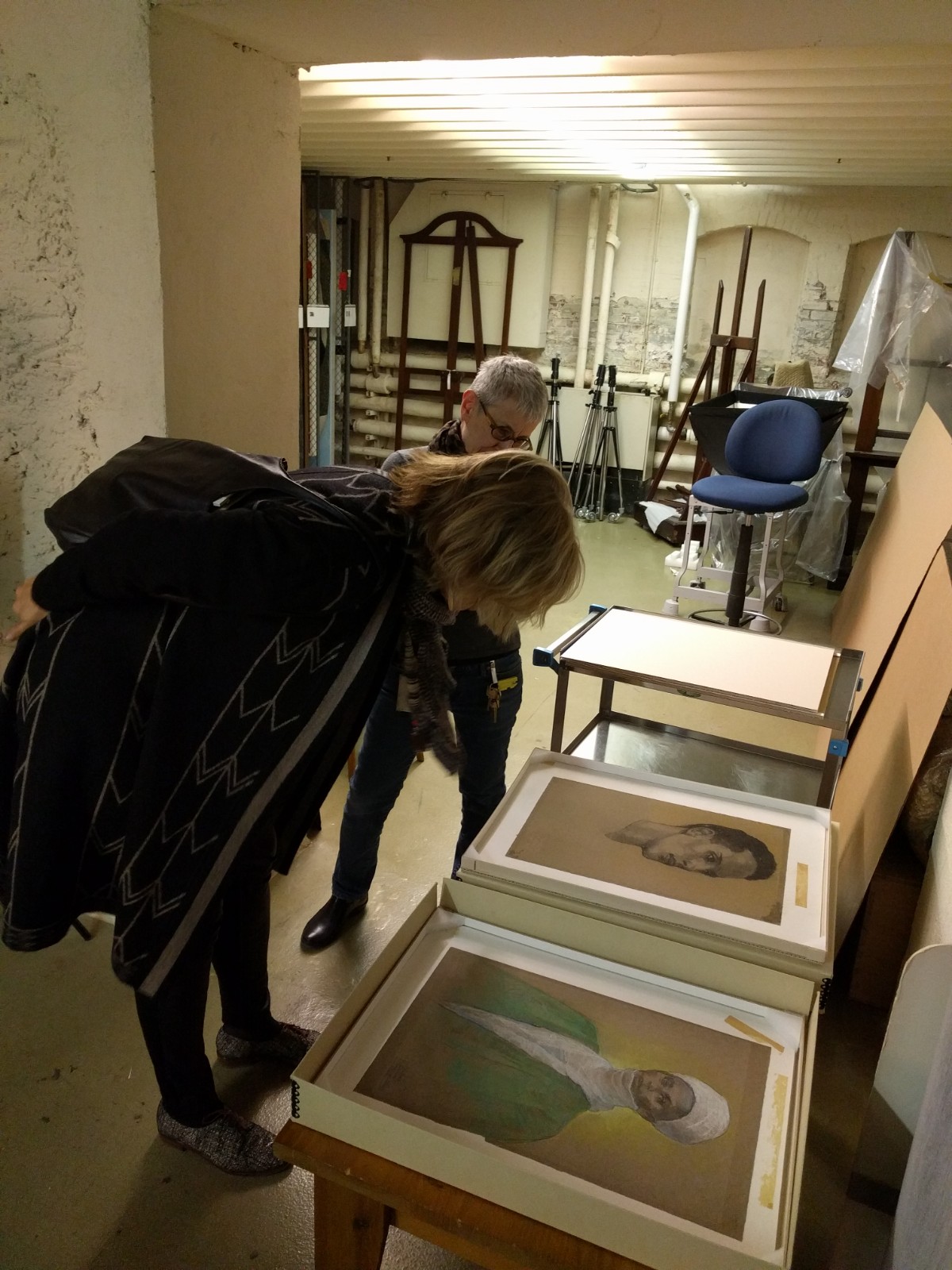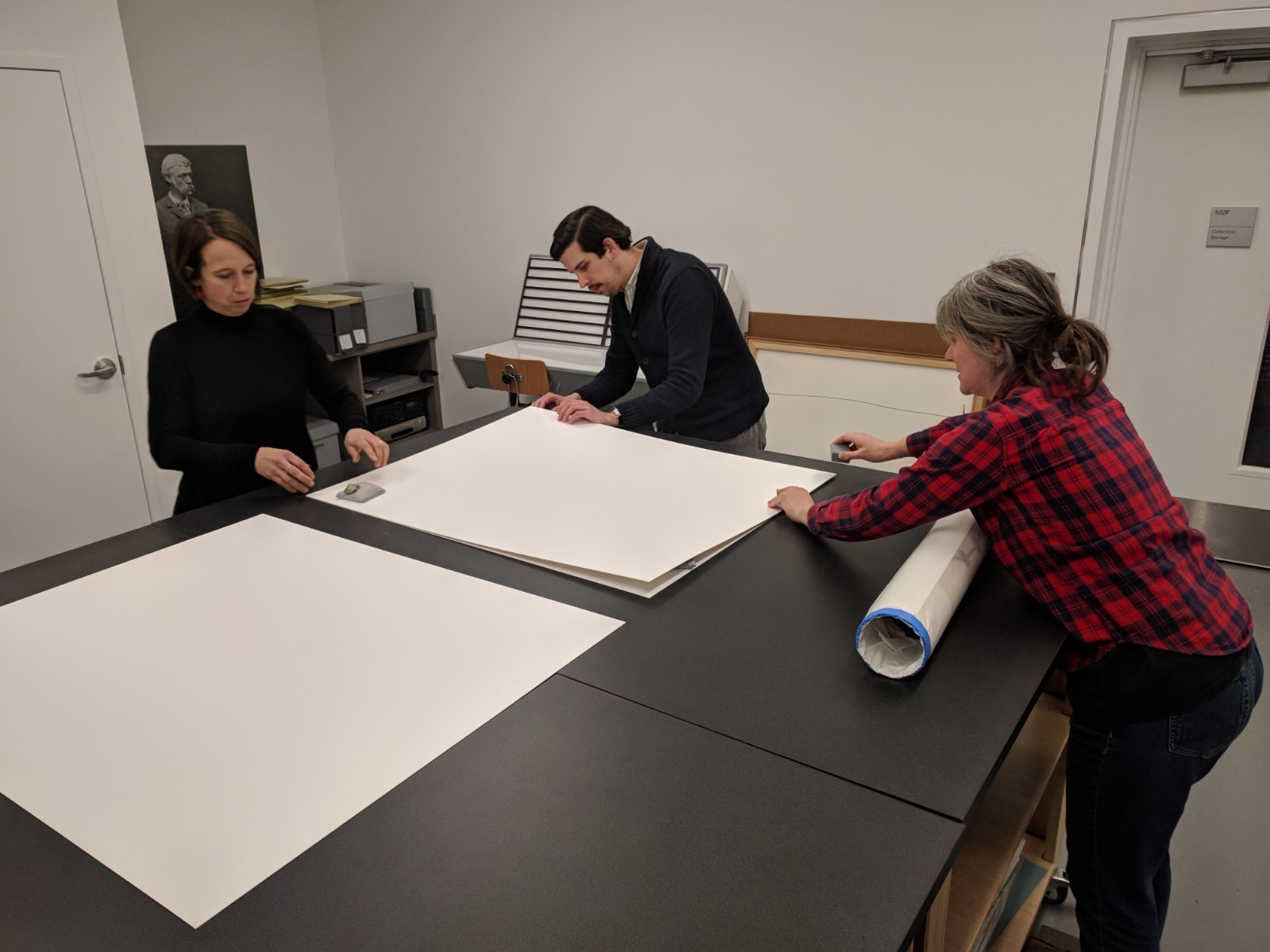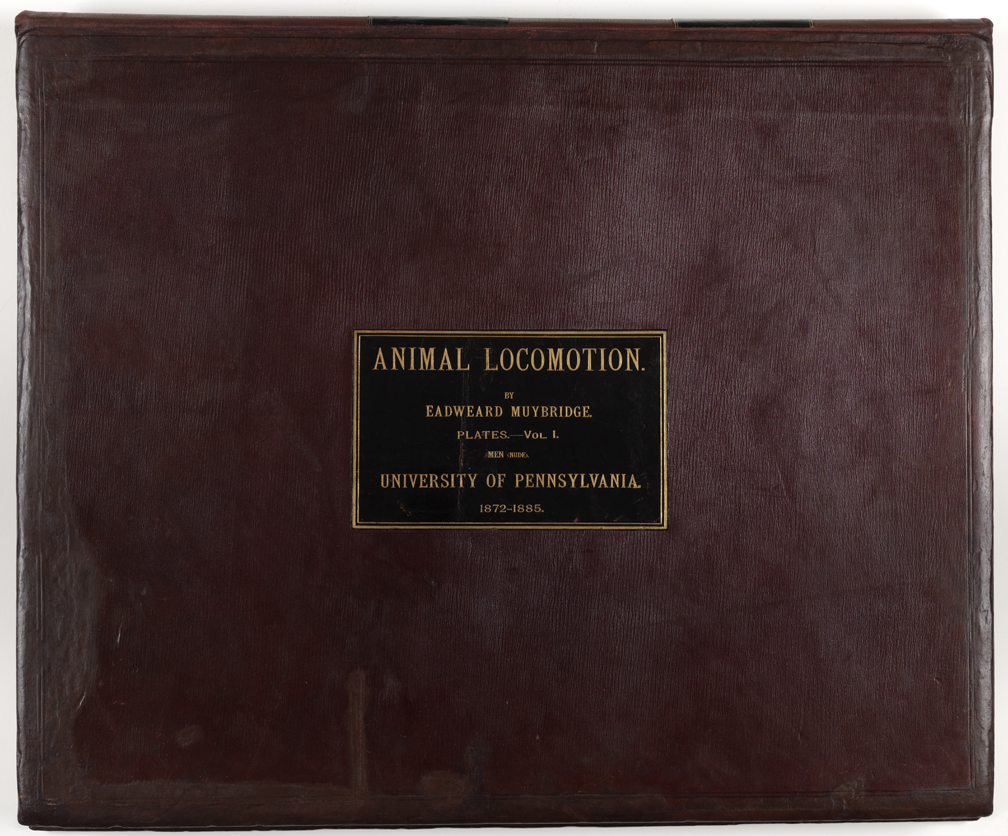Contributed by Alexander Till, Associate Registrar
The Pennsylvania Academy of the Fine Art’s collection, which includes artworks in various media—from painting and sculpture to media art arts and photographs—reveals key aspects of America’s rich artistic history. In recent years, the museum has made a concerted effort to build its collection by acquiring works by underrepresented artists.

Brooke Davis Anderson, Edna S. Tuttleman Director of the Museum, along with Barbara Katus, Manager of Imaging Services, marveling over recently acquired Violet Oakley charcoal drawings.
These works will need some conservation before they will be ready to be exhibited.

Before works of art can enter storage, they need to be cataloged and properly housed. Jennifer Johns, Senior Registrar, and myself work with Liz McDermott to remove the artwork from its shipping container. The works came in rolled and we needed to lay them out to flatten them.

Our work-study student, Sami Russels helping me unpack a new acquisition.
We’re also very excited to announce that PAFA has recently acquired 278 sculptures by 20th century African American artist John Rhoden. We won’t be keeping all works, but we will help broker the rest of the collection for other institutions! Read more here.
